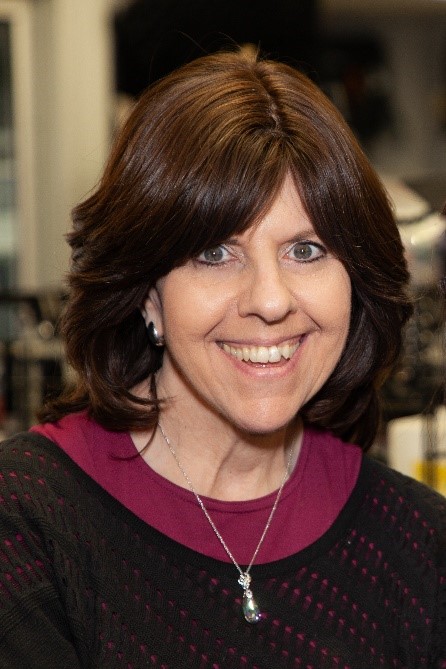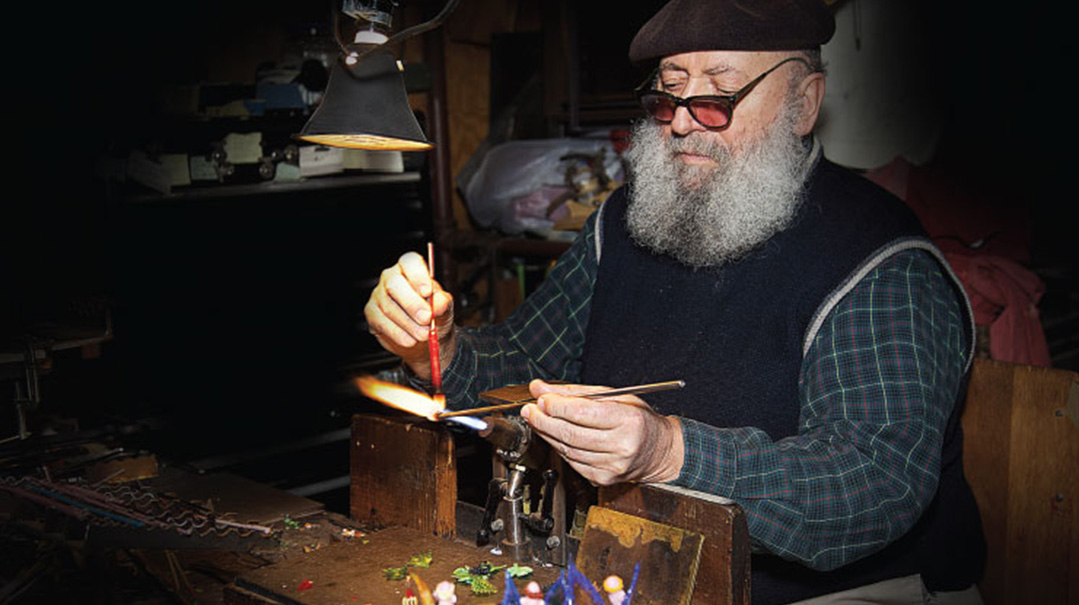A Master at Work

The year was 1967 and Gianni had become the first person in the Toso family to leave the island of Murano in centuries

DEEPER TRUTH “Because I was working in the Jewish Ghetto and because I had developed a close relationship with the chief rabbi of Venice Rabbi Sebag mistook me for a Jew. When I told him that I was not born Jewish he responded ‘I know your neshamah Gianni’” (Photos: Esky Cook)
G ianni Toso is one of the world’s leading glass artists. He’s also an Italian-born descendant of a family that’s been making glass for the last 700 years. In his Baltimore studio we discovered that Toso is as passionate about his art as he is about his late-gained family the Jewish People
To the average passerby, the trellised grapevines of Maestro Gianni Toso’s corner property on Bancroft Road in Baltimore may appear a curiosity.
Indeed, few know that the trellises lead to the studio of one of the world’s greatest glassblowers. It is there that Toso practices a craft that has been in his family for the past 700 years.
Gianni, 75, warmly welcomes us into his studio, dressed for the part — khaki pants, emerald-green plaid shirt, and navy sweater vest. Toso wears a full salt-and-pepper beard and a navy beret rests atop his head.
Toso’s work is found in galleries and private collections in the United States, Europe, and Israel, and is on permanent display at the Corning Museum of Glass in New York and at the Chrysler Museum of Art in Norfolk, Virginia. Many a shul is graced by a ner tamid blown by Gianni, too.
“Toso is considered one of the world’s great artists working in lampworked glass,” according to Cindy Mackey of the Chrysler Museum of Art.
Despite his talent and reputation, Toso is humble about his gifts. “My mother was the first one to tell me that Hashem gave me a great gift, and that I needed to refine it. Hashem has always been my greatest teacher. Many times, I sit down at the torch and don’t even know what I will make. I literally feel Him guiding my hand.”
Everything Is Calculated
Gianni built his studio, formerly a broken-down greenhouse, and just about everything in it, with his own hands, including his wooden workbench, the chandeliers, and a wood-burning stove (for which he chops the wood) to keep him warm when his furnaces aren’t running.
“I make everything over here,” he quips. “The only thing I don’t make is money.”
Toso is being modest. Individual Toso works begin at about $300. Larger, complicated pieces sell to private collectors for as much as $30,000. One complex 114-piece work that took him over a year to complete sold for $120,000.
Oops! We could not locate your form.






